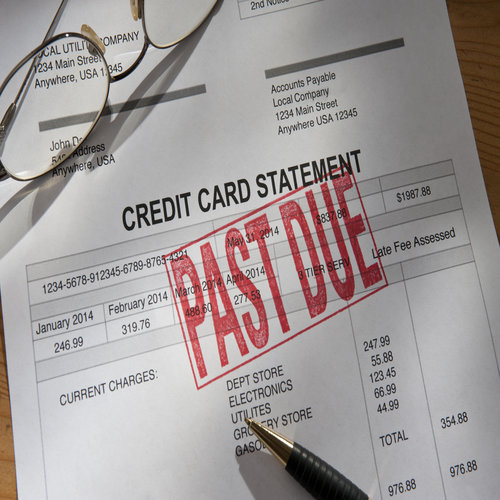Many Americans learned nothing about basic money management over the past decade.
They lived through the recession of 2008 when they suddenly couldn’t pay credit card bills, and have apparently forgotten those hard times. And, as a philosopher famously warned, those who forget the past are doomed to repeat it.
It’s Happening Again
Indeed, despite today’s booming economy, many people are still having problems paying bills, credit industry observers recently warn.
An increasing number of borrowers face higher car payments and are asking for more time to pay. Others can’t pay credit card bills. This is a trend that is disturbing, says a credit card industry expert.
“It is a problem we should watch,” says Bill Hardekopf, founder of LowCards.com.
“I would say that credit card default is definitely a cause for concern,” says Joe Resendiz, an analyst with ValuePenguin, which tracks the credit industry.
Resendiz noted the recent second quarter net credit card default numbers rose for Bank of America (BOA) and J.P. Morgan Chase. In an otherwise rosy second quarter report, the amount of charge card bills that were unpayable rose by 10 percent and nine percent respectively for BOA and J.P. Morgan Chase, compared to the same period of 2017.
Don’t Worry?
But J.P. Morgan charge off rates, said spokeswoman Betty Riess, remain “low” on a historic basis. Year to year credit default rates were down J.P. Morgan officials said in the second quarter report. They expect default rates will be stable for the rest of the year.
Still, the latest numbers come at the same time that those with the poorest credit card records, sub-prime borrowers, saw their credit card debt increase by 26 percent, ValuePenguin said.
Another observer, LendingTree.com, noted a $16.25 billion increase in revolving debt in May. “This was the biggest May jump since 1995,” it said.
Revolving debt is the card debt carried from month to month, usually at high rates because a card, unlike a house, is an unsecured debt. GregoryBresiger.com believes the best revolving card debt balance is a nice round number: zero.
Revolving and non-revolving debt is at $3.86 trillion, LendingTree said. It predicted it will pass $4 trillion this year.
No Memory?
Some borrowers, credit industry analysts say, are forgetting the disasters of 2008. That’s when a sudden recession left many Americans without a job and big banks with huge unpaid debts.
Resendiz said most big banks are seeing default rates rise. The credit card default rate rose in the latest Federal Reserve numbers to 3.65 percent. This was the seventh straight quarterly increase, yet still far from the 2008 numbers. Then default rates were above 10 percent. But, the numbers have been recently rising.
“The rates haven’t been this high since the first quarter of 2013,” Resendiz says. If interest rates keeping going up, he warned default rates will also continue to rise even if the economy keeps growing.
More Households in Money Danger?
“It is a reminder that even in good times, there are a lot of households that are stretched. They’re living paycheck to paycheck,” says Greg McBride, chief financial analyst, Bankrate.com. The problem, he adds, is that lenders are making it “too easy to get deeply into debt.”
Other observers also note problems in car loans. Although auto loan default rates haven’t spiked, repayment terms are becoming more expensive, in part owing to higher interest rates.
In the latest reporting period, “average new vehicle loan amounts and monthly payments” reached record highs according to Experian, an industry observer.
“The dream of owning a new vehicle is becoming more elusive for the average American,” says Melinda Zabritski, Experian’s senior director of automotive financial solutions.
A Hefty Price for a Set of Wheels
The average new car loan was $31,455, an increase of $921 from the year before. Average loan periods are moving from 72 to 85 to 96 months, Experian said.
“One of the danger signs you see is that people are taking car loans for longer periods to keep their payments manageable, McBride says. “And that is extremely problematic because you’re paying off the balance at a snail’s pace.”
The equity in the car is less than the loan balance, he adds. “It compounds the problem when people want a new car two years down the road.” Car loans should be retired, analysts say, before the end of the car’s life.
The common theme of all credit card spending in any environment—-booming economy, recession, etc.—should be a perpetual commonsense approach that applies whenever one spends.
And with credit card debt, Hardekopf says, there is one rule: “My advice on credit cards never changes. Never ever spend more than you can pay off each month.”
![]()
